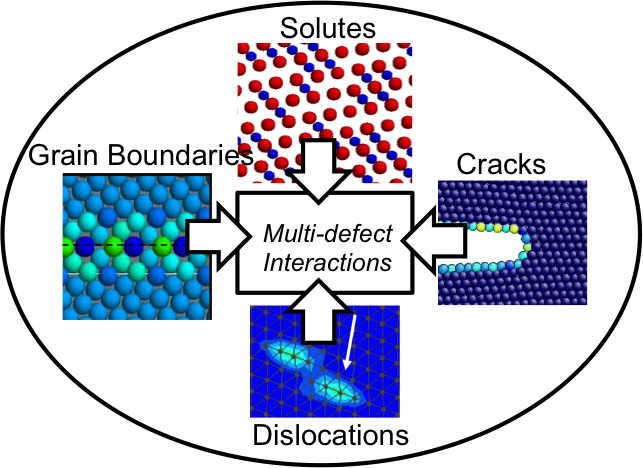A major effort in the lab is research on uncovering and quantifying the fundamental mechanisms of strengthening and toughening in metals and their alloys, with the goal of creating predictive models that can guide optimization and/or design of existing and new materials.

Consistent with the name of the lab, our work spans multiple scales. Appropriate scales of study are identified as needed – we work at the necessary scale(s), and “multiscale modeling” is not an end in itself. In dealing with alloys, i.e. chemistry of multiple elements, the research typically centers around atomistic-scale studies using molecular dynamics. Useful MD studies require accurate interatomic potentials, however, and these are not always available. Thus, we use quantum Density Functional Theory methods when possible to better predict accurate chemistry and energetics. For plasticity, it is also often necessary to understand behavior of non-trivial dislocation configurations, necessitating the use of mesoscale methods such as dislocation dynamics. Finally, at all levels, we use fundamental mechanics and statistical mechanics principles to develop analytic constitutive models. Such models are aimed for use in continuum-level simulations of test coupon and component behavior so that the fundamental mechanisms of deformation are faithfully carried into the macroscopic material behavior.